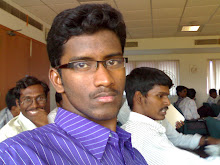
The scientific payload has a total mass of 90 kg and contains six Indian instruments and five foreign instruments.
Indian
TMC or the Terrain Mapping Camera is a CCD camera with 5 m resolution and a 40 km swath in the panchromatic band and will be used to produce a high-resolution map of the Moon. The aim of this instrument is to completely map the topography of the moon. The camera works in the visible region of the electromagnetic spectrum and captures black and white stereo images. When used in conjunction with data from Lunar Laser Ranging Instrument (LLRI), it can help in better understanding of the lunar gravitational field as well. TMC was built by the ISRO's Space Applications Centre (SAC) at Ahmedabad. The TMC was successfully tested on 29 October 2008 through a set of commands issued from ISTRAC
HySI or Hyper Spectral Imager will perform mineralogical mapping in the 400-900 nm band with a spectral resolution of 15 nm and a spatial resolution of 80 m.
LLRI or Lunar Laser Ranging Instrument determines the height of the surface topography by sending pulses of infrared laser light towards the lunar surface and detecting the reflected portion of that light. It will be operating all the time and will take 10 measurements per second on both the day and night sides of the moon. It was successfully tested on 16 November 2008.
C1XS or X-ray fluorescence spectrometer covering 1- 10 keV, will map the abundance of Mg, Al, Si, Ca, Ti, and Fe at the surface with a ground resolution of 25 km, and will detect solar flux. This payload is collaboration between Rutherford Appleton laboratory, U.K, ESA and ISRO. It was activated on 23 November, 2008.
HEX is a High Energy X-ray/gamma ray spectrometer for 30 – 200 keV measurements with ground resolution of 40 km, the HEX will measure U, Th, 210Pb, 222Rn degassing, and other radioactive elements
MIP or the Moon Impact Probe developed by the ISRO, is an impact probe which consisted of a C-band Radar altimeter for measurement of altitude of the probe, a video imaging system for acquiring images of the lunar surface and a mass spectrometer for measuring the constituents of the lunar atmosphere. It was ejected at 20:00 hours IST on 14 November, 2008. The Moon Impact Probe successfully crash landed at the lunar south pole at 20:31 hours IST on 14 November, 2008. It carried with it a picture of the Indian flag. India is now the fourth nation to place a flag on the Moon after the Soviet Union, United States and Japan.
Non-IndianSARA, The Sub-keV Atom Reflecting Analyser from the ESA will map composition using low energy neutral atoms sputtered from the surface
M3, the Moon Mineralogy Mapper from Brown University and JPL (funded by NASA) is an imaging spectrometer designed to map the surface mineral composition. It was switched on 17 December, 2008.
SIR-2, A near infrared spectrometer from ESA, built at the Max Planck Institute for Solar System Research, Polish Academy of Science and University of Bergen, will also map the mineral composition using an infrared grating spectrometer. The instrument will be similar to that of the Smart-1 SIR. It was switched on 19 November, 2008 and scientific observations were successfully started on 20 November, 2008.
miniSAR, designed, built and tested for NASA by a large team that includes the Naval Air Warfare Center, Johns Hopkins University Applied Physics Laboratory, Sandia National Laboratories, Raytheon and Northrop Grumman; it is the active Synthetic Aperture Radar system to search for lunar polar ice. The instrument will transmit right polarised radiation with a frequency of 2.5 GHz and will monitor the scattered left and right polarised radiation. The Fresnel reflectivity and the circular polarisation ratio (CPR) are the key parameters deduced from these measurements. Ice shows the Coherent Backscatter Opposition Effect which results in an enhancement of reflections and CPR, so that water content of the Moon polar region can be estimated.
RADOM-7, Radiation Dose Monitor Experiment from the Bulgarian Academy of Sciences maps the radiation environment around the Moon. It was successfully tested on 16 November 2008.
Saturday, January 24, 2009
11 instruments carried in chandrayaan
Posted by santhoshkumar at 7:40 AM
Subscribe to:
Post Comments (Atom)

0 comments:
Post a Comment